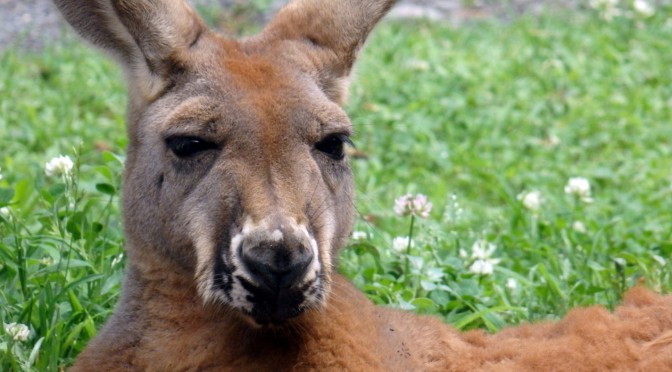Physical Description
Red Kangaroos are the largest living marsupial. Males, known as boomers, can weigh between 120-180lbs and stand around 5-6ft tall. Females, known as blue fliers, are smaller, weighing around 60-80lbs and stand around 4-5ft tall. They are named for the reddish-color fur of the males. Females are more of a bluish-grey in color.
Predators
Because of their large size and strong legs, most predators stay away. Dingoes will prey on kangaroos, and young kangaroos may be captured by raptors.
Lifespan
In the wild, the average lifespan of a Red kangaroo is 12-18 years. Under human care, they can live up to 25 years.
Reproduction
After a 33 day pregnancy, the new joey will crawl out of the mother’s womb and into the pouch; they will only be the size of a jellybean! Only 1 joey will be born at a time though the mother can nurse multiple different aged joeys at one time.
Fun Facts
- When males fight to establish breeding rights, they appear to be “boxing” with their front limbs.
- They live in small groups of 2-10 individuals with a single dominant male, several females, and their offspring.
Conservation Messaging
Although Red Kangaroos are currently listed as a species of least concern, just like many other Australian species they face many threats to their habitats. One major issue is logging and clearing land for agriculture and property development.
One thing that we can do is support sustainable agriculture practices. By purchasing products that are certified by organizations such as Bird Friendly, you are helping in the conservation of forests and habitats around the world.










